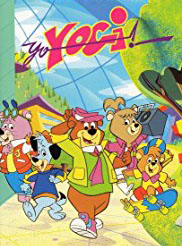 Educational Animation. In 1990, Congress passed a landmark law requiring TV stations to upgrade their children’s programming and that owners of local stations must prove to the FCC that they’re serving the “educational and informational needs” of young viewers or risk losing their licenses. However, that law didn’t slow down these stations who creatively filed applications for license renewal with these actual entries revealed in Newsweek magazine November 30,1992:
Educational Animation. In 1990, Congress passed a landmark law requiring TV stations to upgrade their children’s programming and that owners of local stations must prove to the FCC that they’re serving the “educational and informational needs” of young viewers or risk losing their licenses. However, that law didn’t slow down these stations who creatively filed applications for license renewal with these actual entries revealed in Newsweek magazine November 30,1992:
• Bucky O’Hare: “Good-doer Bucky fights off the evil toads from aboard his ship. Issues of social consciousness and responsibility are central themes to the program.”
• Chip’n’Dale Rescue Rangers: “The Rescue Rangers stop Chedderhead Charlie from an evil plot. The rewards of team efforts are the focus in this episode.”
• Yo, Yogi!: “Snag learns that he can capture the bank-robbing cockroach more successfully by using his head, rather than his muscles.”
Peggy Charren, founder of Action for Children’s Television is quoted as saying, “I don’t know whether to laugh or cry. It’s like arguing that Attack of the Killer Tomatoes teaches the value of eating vegetables”. Judy Price head of children’s programming for CBS responded, “If broccoli is the only thing on a kid’s plate, that doesn’t mean he going to eat it. Who’s to say what’s appropriate for our young? How can you have rules about something that’s subjective? And with all respect to Peggy Charren, who elected her to represent the values of this nation’s parents?”
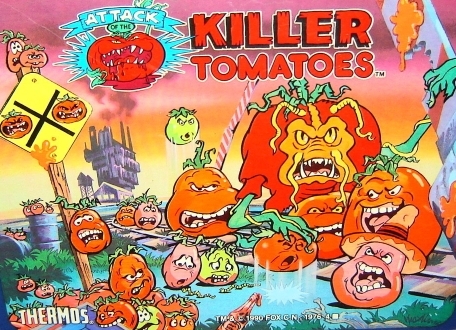
Under the Sea on Saturday Morning. The Little Mermaid animated television series premiered with the animated prime time special called “A Whale of a Tale” (1992) that was never re-broadcast and then the show was moved to Saturday mornings the very next day on CBS from 1992 to 1994. Reruns were later shown on The Disney Channel beginning October 1995.
Disney television animation president Gary Krisel is the one who proposed adapting the Disney animated feature film The Little Mermaid (1989) into a television series. In the Los Angeles Times for September 10th, 1992, he said: “I don’t think there’s been a tradition of not adapting the features to television. The opportunity didn’t present itself before now because of limits on the animation process and other factors. Ariel is a unique character with contemporayr sensibilities. No stronger girl character has been created in the last twenty years.”
Animators who worked on the original feature film were vocal, but kept their anonymity for fear of impacting their jobs, that they were upset that their work was being trivialized by limited animation and foreign animation studios.
No Seuss for Disney. Actor and clown Bill Irwin came to visit Ted Geisel (Dr. Seuss) at his house while Irwin was performing at the La Jolla Playhouse. He was seeking Geisel’s permission to play the role in a production of Cat In the Hat that Disney was proposing as a television special. Geisel said that he admired Irwin’s talent but had absolutely no interest in ever working with Disney. Geisel’s wife, Helen Palmer, had during the 1940s written some children’s books for Disney including Donald Duck Sees South America.
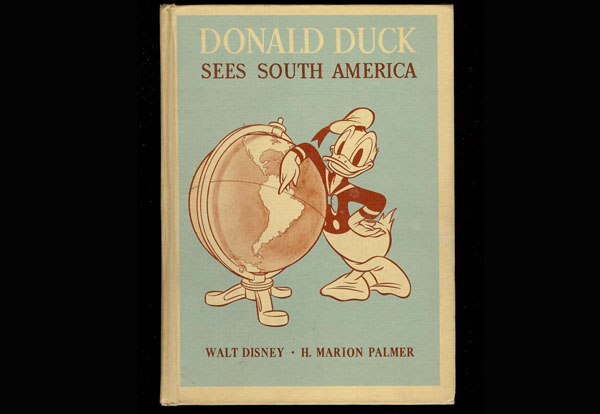
Kimball on The Three Cabelleros. In the Boston Sunday Globe July 12, 1992, animator Ward Kimball talked about the The Three Cabelleros (1944) sequence where the characters sing the title song: “I think it’s my best animation because it was the most imaginative, and broke a lot of rules, shocked everyone here (at Disney). I did what I did out of desperation. They decided they’d have a song about the title in the picture and they handed me the acetate on which they had recorded the whole thing. I was pretty disgusted with the deal. ‘What am I supposed to do here? What’s it tie into? It’s just a song.’
“I spent a whole week grousing about it, sitting in my room, listening to it. Then all of a sudden, I got belligerent and decided to do exactly everything the song was saying. For every descriptive passage, I had it just happen. They ran out of the side of the frame and then came back in from the top.
“The director didn’t want to show it to Walt. He was afraid of what I had done. I kind of like it because I was getting revenge on these people who had dropped it in my lap. When the director had to run his section of animation for Walt, it included the song I had animated. Everyone kind of laughed seeing all this stuff.
“Walt thought it was great. The director turned to him and said, ‘Well, of course, we’re going to change things.’ And Walt said, ‘What the hell are you talking about? Don’t you recognize something that’s OK when you see it?’ And he turned and said, ‘OK for inking and painting.’ To this day, I think it’s the best sequence I’ve ever done.”
The Wellingtons. Not to tread on my friend Greg Ehrbar’s territory but most people know the musical group The Wellingtons (George Patterson, Kirby Johnson and Ed Wade) from their recording of the theme song for the 1965 television series Gilligan’s Island. In one episode they popped up as the singing group The Mosquitoes. However before that gig, when they performed at the Disneyland Hotel, Walt Disney was sitting in the front row and signed them for his record label. They sang “The Ballad of Davy Crockett” and later the sound track title song for the Disney live action film Savage Sam (1963) as well as the theme song for the television show The Wonderful World of Color among other Disney tunes including an album with Annette Funicello.
William Hanna. In the U.K. 1961 Picture Show Annual, animation producer William Hanna said, “My partner (Joe Barbera) and I got along together so well all these years that by now we seem to be like identical twins, knowing each other’s thoughts and blending our ideas together. My first cartoon job was with Harman-Ising where my duties were to clean cartoon frames, sweep up the place, run errands and inspire bosses with story ideas.”
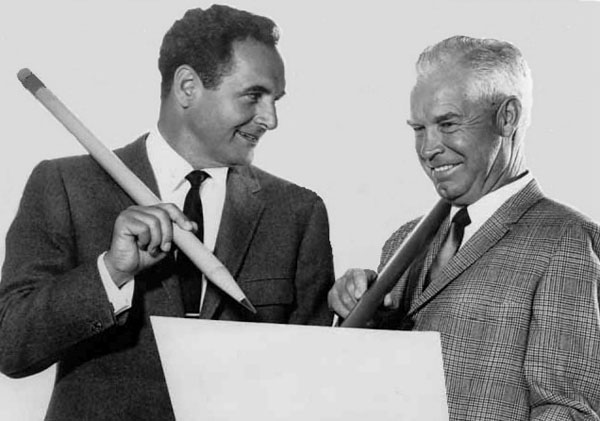
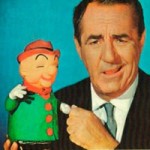 Jim Backus. In the U.K. 1961 Picture Show Annual, actor Jim Backus talked about his cartoon alter ego Mr. Magoo: “He’ a pompous little business man, rather the equivalent of England’s Colonel Blimp. I do the voice first then the film is made later. I can record anywhere, sometimes even in my bedroom. My own name carries little weight with people but I only have to say ‘Mr. Magoo speaking’ and that achieves the effect.”
Jim Backus. In the U.K. 1961 Picture Show Annual, actor Jim Backus talked about his cartoon alter ego Mr. Magoo: “He’ a pompous little business man, rather the equivalent of England’s Colonel Blimp. I do the voice first then the film is made later. I can record anywhere, sometimes even in my bedroom. My own name carries little weight with people but I only have to say ‘Mr. Magoo speaking’ and that achieves the effect.”


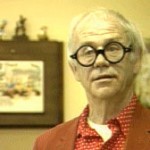
 Jim Korkis is an internationally respected animation historian who in recent years has devoted his attention to the many worlds of Disney. He was a columnist for a variety of animation magazines. With his former writing partner, John Cawley, he authored several animation related books including The Encyclopedia of Cartoon Superstars, How to Create Animation, Cartoon Confidential and Get Animated’s Animation Art Buyer’s Guide. He taught animation classes at the Disney Institute in Florida as well as instructing classes on acting and animation history for Disney Feature Animation: Florida.
Jim Korkis is an internationally respected animation historian who in recent years has devoted his attention to the many worlds of Disney. He was a columnist for a variety of animation magazines. With his former writing partner, John Cawley, he authored several animation related books including The Encyclopedia of Cartoon Superstars, How to Create Animation, Cartoon Confidential and Get Animated’s Animation Art Buyer’s Guide. He taught animation classes at the Disney Institute in Florida as well as instructing classes on acting and animation history for Disney Feature Animation: Florida.




















































Yo Yogi and Killer Tomatoes were a couple of truly awful animated cartoons . On Yo Yogi having Yogi and his gang as teenage mall rats and Ranger Smith as a Mall Cop was totally pointless to Yogi purists like myself and the only legacy was it was considered as one of the stupidest animated series that ever aired by one parental watchdog group.And Attack of the Killer Tomatoes uuuuugggghhh, make you wonder what the executives of the Fox Kids Network was thinking by airing this Crapfest along with a another series based on the schlocky yet fun horror flick later Broadway smash Little Shop of Horrors to a cringeworthy Crapfest called Little Shop where the Three principle characters were kids and Audrey II was a rapping man eating plant?? Yeech….
I concur…!
My reaction to “Yo, Yogi” was “No, Yogi!”
The “Killer Tomatoes” cartoon was based not so much on the original movie (though the cartoon used its theme), but on its sequel, “Return of the Killer Tomatoes” – the Mason Dixon character from the first film was nowhere to be found, but Prof. Gangreen (John Astin) and other characters from “Return” were featured.
Bill Irwin would have been a great choice for The Cat in the Hat.
The Ward /
3 Cab story, alone, was worth my getting up today for
Hey Jim — feel free to tread! It’s not like knowledge is copyrighted but instead for everyone to enjoy. Dr. George Patterson is now a family therapist and Wade became a lawyer. Sadly, Kirby passed away after a successful music arranger. They chose the name “the Wellingtons” at random from the telephone book.
“After a successful career as a musical arranger.”
ANd of coruse the Wellingtons only did the song for the black and white Season 1 (I have all of the three seasons on DVD) before their classic guest appearance as the Mosquitos. And it ties in with the Jim Backus/Magoo anecdote.
BTW I guess Ted Giesel was scared that if he had ever got the chance to work with Disney it would be like the terrible fate he had with Chuck Jones later with the Grinch…
” The Little Mermaid animated television series premiered with the animated prime time special called “A Whale of a Tale” (1992) that was never re-broadcast and then the show was moved to Saturday mornings the very next day on CBS from 1992 to 1994.”
Jim, what do you mean that “Whale of a Tale” was never re-broadcast?? It has been episode 1 of the series ever since the premiere – and has been rerun plenty of times.
It was also released on VHS shortly after airing.
It was never re-broadcast on television in that long format as one thing. It was broken up into separate episodes as part of the series. Like DuckTales had a movie and then it was broken up into separate episodes of the series.
” And with all respect to Peggy Charren, who elected her to represent the values of this nation’s parents?”
I agree. What was the whole point of the parent code when public television stations (WNET) in America was starting to receive some high-quality children’s educational shows by the late ’60’s? Honestly, it was uncalled for in my opinion.
She certainly was of no help whatsoever.
Ward Kimball makes it sound as though the quirkiness of the animation on “The Three Caballeros” song was his unique contribution, but the entire film is surrealistic, rule-breaking, and way out of the box. My impression from multiple viewings of the film is that it must have taken an entire team effort to make this such an unorthodox, kaleidoscopic, wildly whimsical experience. Before it reached the pencil stage, wouldn’t an extensive storyboard have been done first? Although Ward seems to have been close to Walt, at least as a valued employee, and sometimes as more of a personal friend, and Walt evidently trusted him to a great degree, Ward’s account of just being given free reign to develop the entire sequence any way he saw fit without any prior determination of how it was to be done, seems a little improbable. While the Disney animators grew into their specialty areas and were encouraged to develop their creative muscles, there was always an overriding vision (Walt’s) governing what they did…or have I been misreading Disney studio history all of these years?
I was intrigued by the No Seuss for Disney anecdote and found this http://www.disneyhistoryinstitute.com/2014/08/duck-in-hat.html
Seems there’s a Dr Seuss book out there with Walt Disney’s name alone as the author.
Upon hearing of William Hanna’s first job in animation, I wondered what story ideas took hold with Harman/Ising–did he inspire “THE ALLEY CAT”? When Harman and Ising moved to the in-house studios of MGM, I kept thinking that the pacing of gags in their cartoons seemed as if Bill Hanna might have had something to do with the cartoons that were created, although “TO SPRING” was, I believe, the first cartoon to have Bill Hanna’s name on it. I’d be curious as to any other memories, fond or otherwise, that was quoted by Bill Hanna about his days at MGM, outside of his work on the CAPTAIN AND THE KIDS series, which I gather they both despised. I’m also guessing that the gut reaction to animation violence that resulted in so much toning down of what animation did best, came from so much classic theatrical animation showing up on TV, and I’ve always said that the cartoons made for tehaters were never meant for the kids alone; note that there was a lot of animated support for our troops on the battlefield during Word War II and, although I don’t recall much of it being forwarded to TV packages, there were gags throughout some of the homefront cartoons that referenced it heartily, and there was always so much reference to pop culture of the times. That is all what makes our classic theatrical cartoons so collectable now and full of so much interesting history! Adding “teaching tools” within animated cartoons isnt’ entirely a bad thing, but few studios knew how to do it without that wagging moralistic finger, like a nagging parent. The best such cartoons came as if from the kids’ point of view. Otherwise, I just wanted the usual cartoon wackiness. That is what I looked for in cartoons that I watched, theatrical or otherwise, that world that I was certain did not exist when I went outdoors, that world that only existed from the pens of those with imagination!
Hanna Barbera’s decline in content from ’67 onward is something worth discussing, even if you don’t like their early efforts. (I can understand why.)
I heard enough of those types of negative stories and rather have the site focus on other things. Besides, some of the folks that worked on those projects (including the bright spots) might be reading this blog.